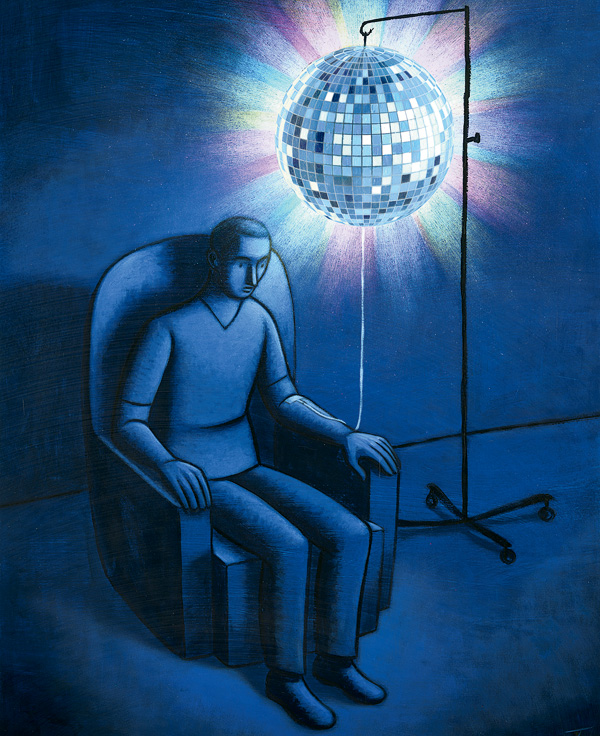
Don’t people take ketamine at raves?
Well, yeah. Club kids call it Special K and snort it for its dissociative, dreamy effects. But it’s also been used as a (legal) anesthetic since the ’70s. In the early 2000s, doctors realized it quickly treats depression and began prescribing it in small doses. Researchers theorize it works by blocking cells from firing in the lateral habenula, an area of the brain that represses reward centers, according to a study released in February. (Maybe it’s also got something to do with those dissociative effects?)
How does it get administered at clinics?
First, you need a prescription from your doctor. Then, after a consultation at the clinic, you’ll hang out in a recliner for 45 minutes or so while an IV drip infuses the drug into your bloodstream. A nurse monitors your blood pressure and heart rate. (Be wary if the clinic doesn’t track your vitals.)
Will I get high?
Not exactly. The concentration is less than a 10th of the amount used in anesthesia—so you won’t end up twirling glow sticks, but you’ll still want someone to drive you home. Most people feel carefree and a little sleepy. Some get slightly nauseated. Depression usually begins to lift after one or two sessions. The treatments are particularly effective for helping people past suicidal thoughts—many patients found relief within several hours after their first stint on the drip, according to a study released in December.
But is it safe?
It’s still unclear whether regular use is harmful, but studies suggest that the type of treatment most ketamine clinics offer—a couple of infusions a week for two or three weeks—is probably fine.
This has to be expensive, right?
Insurers don’t cover ketamine as an antidepressant because it’s an off-label use (at least for now), so each session will run you anywhere from $350 to $1,250. Sure, that’s at least 14 times the cost of buying a hit on the street—but it’s a lot cheaper than fighting a possession charge in court.



Comments are closed.